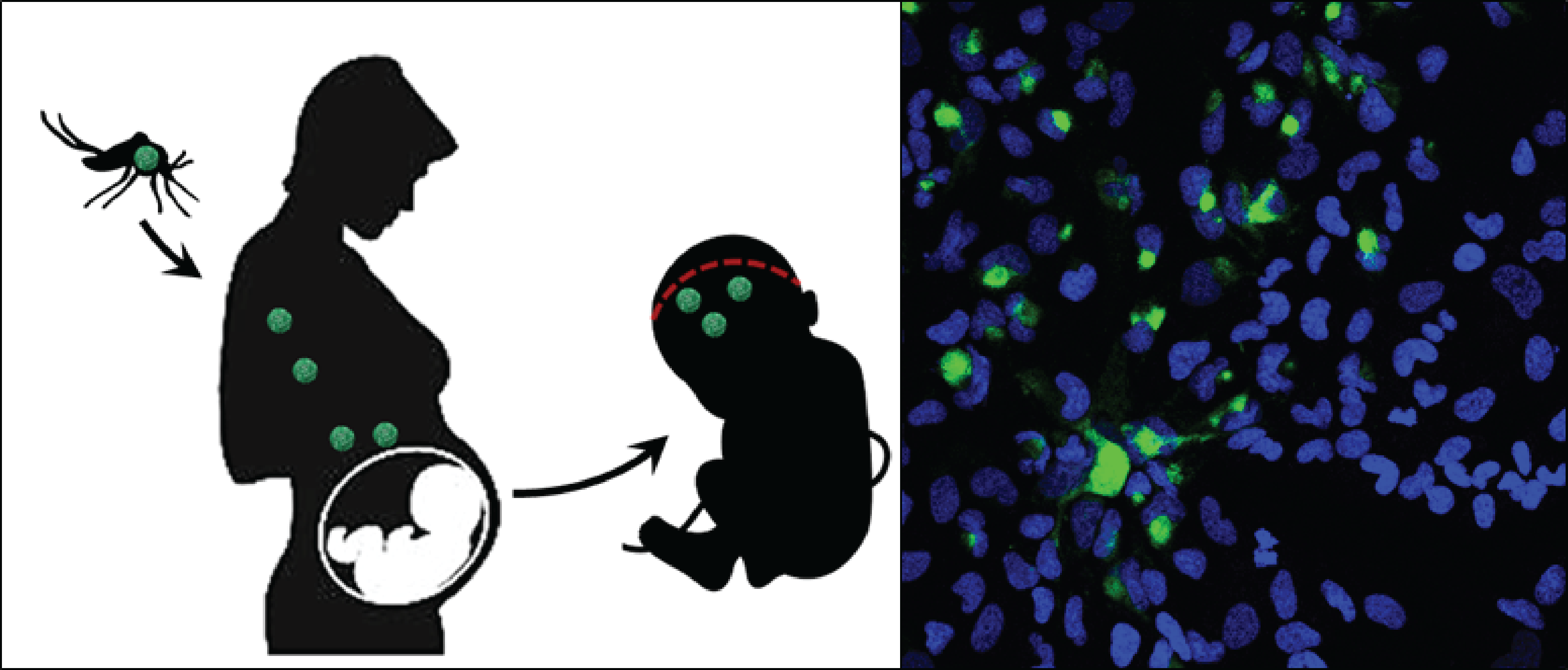Zika virus (ZIKV) is transmitted to humans through the bite of an infected mosquito and through sexual contact. It can infect multiple different sites within the body, including the brain, mucosal/genital tissues and other sites, including placenta and fetal tissues. ZIKV first emerged out of the Zika forest in Uganda, Africa. It has since spread into Southeast Asia and the Pacific islands to arrive in South America in 2015. Since emerging in Brazil, there have been over 200,000 confirmed cases of Zika virus (ZIKV) infection in the Americas, now including the United States, with at least 3,689 documented cases of congenital ZIKV syndrome. One of the most notable pathologies associated with congenital ZIKV syndrome is microcephaly (a head and brain size that is significantly smaller than the mean head size for gestational age). Children born with microcephaly highly likely to present with severe mental disabilities, requiring life-long provision of care. Thousands of cases of congenital ZIKV syndrome have now been recorded across 24 countries in the Americas, and ZIKV continues to emerge in population centers. It is now paramount to understand how the virus initiates infection and spread within the body to cause ZIKV congenital syndrome. Understanding these processes will facilitate the development of therapeutic and vaccine strategies to control ZIKV infection.

The Gale laboratory is conducting research with our collaboration partners within six focus areas to define the processes that control ZIKV infection and immunity. Specifically, we are currently focused on:
- Defining how the body recognizes ZIKV infection to initiate innate immunity against infection.
- Using systems biology to understand the host response to ZIKV both in adults and in maternal/fetal pairs during pregnancy.
- Defining the molecular basis of microcephaly caused by ZIKV infection.
- Determining the virologic processes and the immune selective pressures that drive ZIKV quasispecies diversity and the selection of tissue variants of ZIKV in the infected host.
- Developing novel innate immune therapeutics to treat ZIKV infection
- Developing and testing novel vaccines to prevent ZIKV infection and to prevent maternal to fetal transmission of ZIKV.
